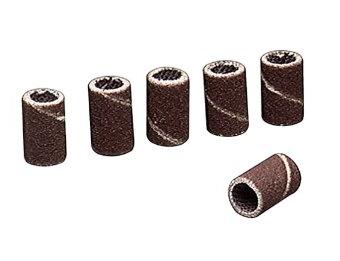Throughout various articles on the blog I have mentioned the use of the Dremel Tool in my refurbishing and carving of pipes. I thought it would be helpful to write a bit about the ones that I use regularly and refer to often.
I have two Dremels that I use for working on pipes for repair and those I have carved. The first one is a relatively new one that my girls gave me for Christmas last year. It is pictured below and is a MultiPro. It is a variable speed precision handheld rotary tool with ball-bearing motor that drives a wide variety of bits at any speed from 5,000 to 35,000 RPM. The Model 395 Multi-Pro tool came with an assortment of accessories that are pictured below – sanding drums, grinding stones, sanding and cutting disks and polishing disks, a drill bit. The tool itself has carbon motor brush set; keyless chuck, wrench, quick-change collet nut and a Windowed organizer case.

My second Dremel is the one pictured above. I have had this one for over 10 years and it has been trouble free since I purchased it. It has seen a lot of work on stems and briar. I have had to clean out the brushes and opening with an air gun several times over the course of the years but it has become and old standby. It is a Dremel MultiPro 200-N/40 Rotary Tool. It came with a full kit like the first Dremel but includes a few more accessories as listed below.
Kit Accessories:
• Drill Bit
• High speed cutter
• Mandrel
• Coarse 1/2″ sanding drum
• Coarse 1/2″ sanding band (3)
• Emery cut-off wheel (5)
• Coarse sanding discs (36)
• Small felt wheel (4)
• Heavy duty emery cut-off wheel (3)
• Emery wheel (2)
• Fiberglass cut-off wheel
• Large felt wheel
• Coarse 1/4″ sanding drum
• Coarse 1/4″ sanding band (3)
• Fine 1/2″ sanding band (3)
• Fine 1/4″ sanding band
• Aluminum oxide wheel
• Aluminum oxide stone
I use many of the accessories in a variety of ways. The one that use the most is the sanding drums like the ones pictured below and on the picture of the Dremel with the sanding drum attached. I have found that in my restoration work I use the sanding drum for shaping a stem and adjusting the diameter of the stem at the shank junction. It takes a steady hand to not nick the shank of the pipe but the tool really makes short work of removing excess vulcanite or Lucite material. I also use it on a low speed to sand out the bowl and remove excess cake. I insert the drum into the bowl before turning it on and then adjust to a low speed on the Dremel to slowly sand away excess cake or smooth out existing cake. It does not work in the heel of the bowl and that work must be done with a reamer or a piece of dowel and sandpaper.

I also use the sanding drums when carving briar pipe kits or shaping a drilled block of briar. It quickly and easily removes excess briar and is very maneuverable in shaping the angle and curves of the block into the shape of the pipe I am carving. The sanding drums come in two sizes. The one pictured below is the one I use the most in both refurbishing and carving. It is ½ inch in diameter. The smaller size is half the diameter (1/4 inch) and comes with its own head for holding the sanding drum. I find that I use it when working on more detailed work in refurbishing or shaping a stem. In carving I use it for the bowl shank union.

I know others hang the Dremel from a stand and use a long flexible shaft attachment to carve and shape briar and stems. I have not found that I need a flex shaft though I have one in my tool box. I like the up close control of the tool as it is. It is probably a matter of what I have grown accustomed to in my work. I have also had competitor models and lower priced models over the years but have come back to the Dremel as it outlasts all the competition. I believe I have burned through at least two other rotary tools made in China and found that the brushes and motors just do not last for long. They are also very noisy to use in comparison to the Dremel.


Great post bro!
I simply cannot live without mine!
LikeLike